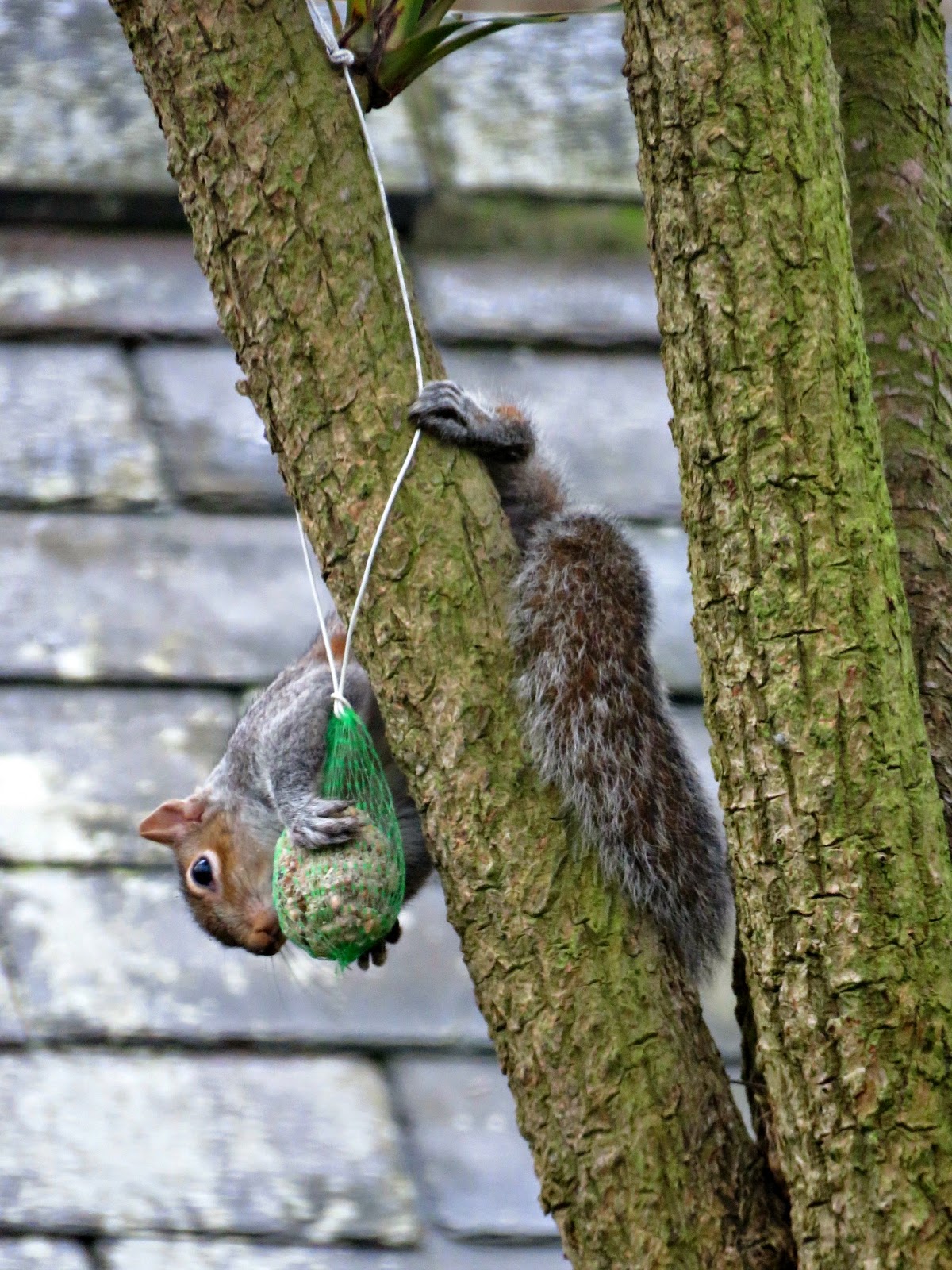I've become a twitcher!
Now let me quickly clarify exactly what this new passion of mine consists of ... before you start thinking I've developed some sort of itchy skin complaint or an embarrassing nervous condition.
I've started to watch the birds in my back garden ... obsessively.
I trooped off down to the garden store and bought some bird feeders, which I strung up on random branches around the back garden. Well I say random, but to tell the story straight there was nothing random about it: the branches were all strategically chosen so that the little critters wouldn't poop-bomb my decking and garden furniture.
And thus began my obsession with what was going on outside my kitchen window.
I've had all manner of furred and feathered visitors.
A ravenous flock of these cheeky green chaps seem to live hereabouts.
They hang out in her garden, raid her cherry tree and kick up a merry racket like a bunch of teenage delinquents at their first cider party. I have since learnt how eloquently her words sum up the squawk-along antics of our green-feathered friends.
Luckily we have some other very well-behaved native birds.
The pigeons love, love, love the berries on my ivy.
And, being British pigeons, they form a nice orderly queue to take their turn feasting on the vines.
I got very excited when I saw this handsome chap, and had to follow him around the garden with my telephoto for ages before I could get a decent angle on him. I think he's a great spotted woodpecker.
 |
| Great spotted woodpecker |
Next up was this very handsome fellow, who came with one of his chums. If I knew how to sex a starling I might have been able to say whether it was his girlfriend or not. In any event I'm pretty sure he's a starling.
Now this little man has got to be my favourite. I have a great, big, soft spot for the robin. Here he is, balanced on top of Emi's swing, waiting his chance with the peanuts. What a well-mannered little boy he is.
These birds were rather splendid. Sadly they're not really in focus. I think they may be some type of sparrows. They came in a big feathered gang.
I have a lovely little blackbird who sweetly serenades me with song before she partakes of my back-garden bounty.
And then there's old Cheeky Paws, who's not even a bird, although he thinks he's cock of the walk in this garden. He usually arrives over the garden wall, pausing on his way past to have a good look in through the kitchen window.
He went to investigate the peanuts first ...
... hmmm ... very nice! Very nice, indeed. Don't mind if I have a few of these.
... in fact, why stop at a few? After all I am trying to store some fat under this fine fur coat of mine.
... Aha ... and what's this other thing she's hung up for me?
... I'm not sure, but it tastes good ...
... really, really, really good.
Like why don't I just take this baby back to my drey, and have it all for myself ... .
A serious amount of pulling and tugging ensued, accompanied no doubt by some mild squirrel bad language, which doesn't bear repeating.
I've done it! Eureka! I'm so outta here!
And that was the end of one of my fat balls.
It's a circus out there, and I seem to be spending an unhealthy amount of time watching it. In fact I'm beginning to wonder whether I'm freaking the neighbours out. I mean how would you feel if there was this weird woman with a telephoto lens that seemed to be trained on your bedroom windows all the time ?? ERRR...
All the best for now,








































